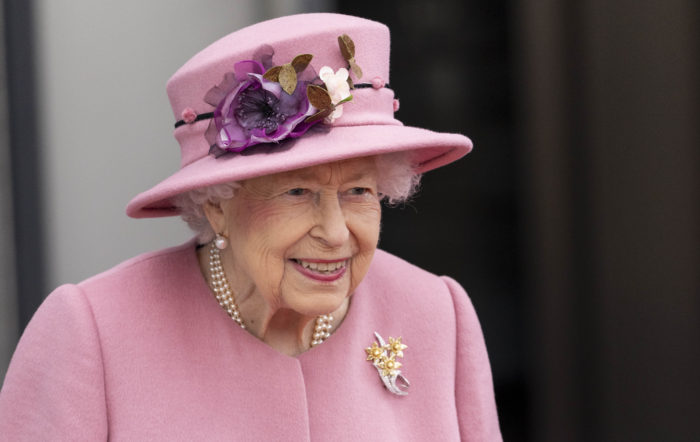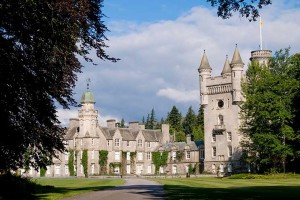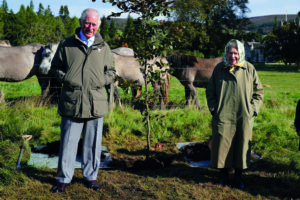In memory of HM Queen Elizabeth II

Following the recent death of Her Majesty Queen Elizabeth II, we pay tribute to her remarkable life and reign
On the afternoon of September 8 2022, Elizabeth II, Britain’s longest-reigning monarch, sadly passed away at Balmoral Castle, in Scotland. The Queen loved Scotland and her royal residence at Balmoral, having spent many summers here since she was a child. She could regularly been seen in her tweeds and wellies, embracing the natural environment of the Cairngorms, and watching her corgis run free.
Queen of the United Kingdom of Great Britain and Northern Ireland for 70 years, Her Majesty’s tenure can be defined by a sense of duty that has made her one of the world’s most respected heads of state.
Born Princess Elizabeth Windsor on 21 April 1926, she was the first child of the Duke and Duchess of York. During the Second World War, determined to do her bit, the 18-year-old princess joined the Women’s Auxiliary Territorial Service. She married Philip Mountbatten at Westminster Abbey in 1947, then welcomed her first child, Prince Charles, in 1948, and Princess Anne, in 1950.
Her relatively quiet life as a wife and mother came to an abrupt end in 1952 when she learned of the death of her father, King George VI while on a royal tour of Kenya. She was crowned at the tender age of 27 in 1953, though she became Queen the moment her father died the previous year.

Her family grew to include two more princes – Andrew and Edward – in the 1960s, a decade of political and social change that was overseen by Elizabeth II’s diligent reign. A public outpouring of respect for the monarch would follow in 1977 to mark her Silver Jubilee.
Another decade, the 1990s, proved more challenging. In particular, the Queen’s self-proclaimed “annus horribilis” in 1992, which saw Princess Anne divorce and Prince Andrew and Prince Charles separate from their wives amid tabloid scandal. Then, in November, fire ripped through her favourite home, Windsor Castle. The next few years continued in a tragic vein with the death of Princess Diana in 1997 and the loss of her mother and sister in 2002. Yet the Queen would ride out these storms, charting a course to smoother waters for a modernised monarchy.
The loss of her beloved husband of 73 years, Prince Philip, in April 2021, marked the end of an era. Despite speculation that she planned to abdicate, the Queen continued to reign with the grace and humanity for which she was renowned.
The Queen’s Platinum Jubilee in June 2022 celebrated her astonishing 70-year reign, making her the longest-reigning monarch in British history. She will be dearly missed by the Royal Family; indeed, by our entire nation, and many more the world over.
The death of the queen: What happens now?
King Charles automatically became king on the death of his mother. He was officially proclaimed king on Saturday 10 September at St James’ Palace in London in front of a ceremonial body known as the Accession Council. Gun salutes were be fired in Hyde Park, the Tower of London and from naval ships, and the proclamation announcing Charles as the King was read in Edinburgh, Cardiff and Belfast.

In his first week as King, King Charles III and his wife Camilla, the Queen Consort, undertook a tour of Scotland, Wales and Northern Ireland, before they headed back to England for the funeral.
The Queen’s funeral and lying in state
Because the Queen died at Balmoral Castle in Scotland, what was known as ‘Operation Unicorn’ took place. Her coffin was taken down to Holyrood Palace in Edinburgh and then processed up the Royal Mile to St Giles’ Cathedral where she was laid in state for 24 hours for the public to come and pay their respects.
On Tuesday 13 September her coffin left Edinburgh and was flown down to London. On Wednesday 14 September her coffin was be processed from Buckingham Palace to Westminster Hall, where she lie-in-state for four days before the funeral takes place on Monday 19 September. We joined the queue to see her – read more about that here.
On Sunday 18 September, the night before the funeral, a national minute’s silence took place at 8pm.
On Monday 19 September at 10:44am the Queen’s coffin was taken in procession from the palace of Westminster to Westminster Abbey, where the funeral began at 11am. Among the guests were members of her family, senior UK politicians and heads of state from across the world, and representatives from the charities she supported. Read more about the funeral and what happened, here.
Although the funeral will took place at Westminster Abbey, her final resting place is at St George’s Chapel in Windsor Castle, where she has been reunited with her husband, the Duke of Edinburgh, who is also buried there.



